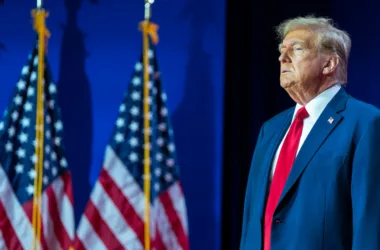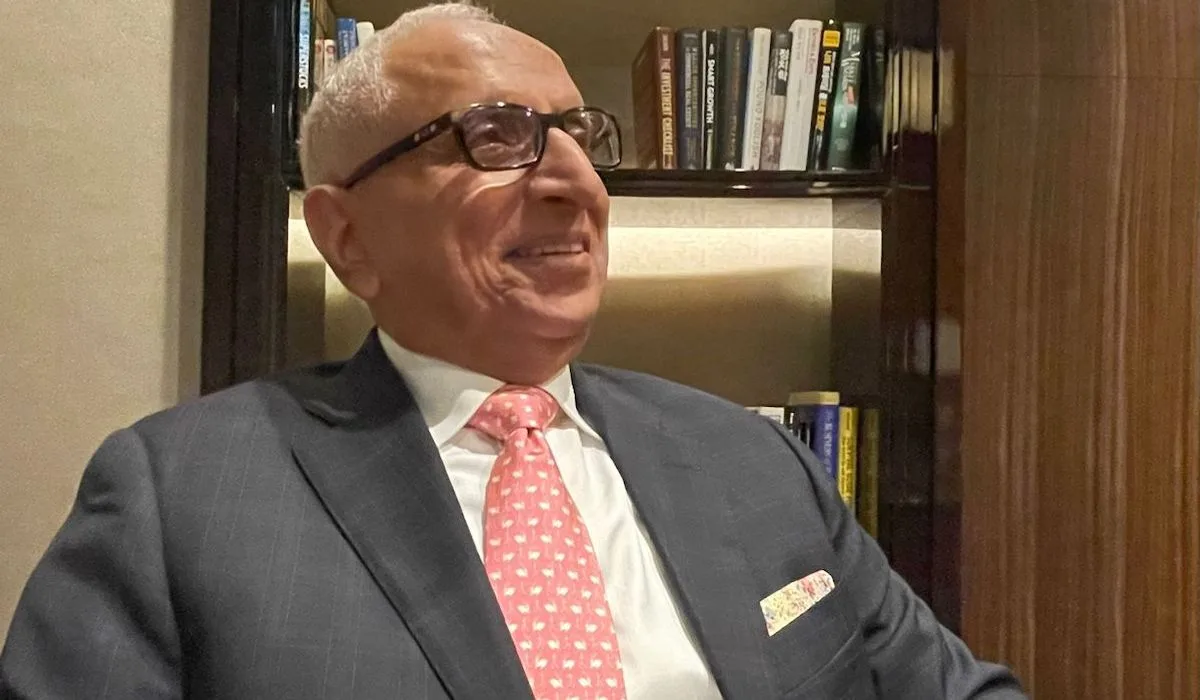SEOUL, South Korea — As the worldwide semiconductor landscape undergoes massive expansion and geopolitical shifts, Japan and India are poised to rise as major manufacturing hubs, boosting U.S. hopes to curb China’s rising clout in a critical market for 21st-century industry.
Over a quarter of the new chip-making plants coming online globally through 2026 are in China, which already supplies between 50% and 60% of the world market for less sophisticated low-end chips. U.S. officials and private analysts were rocked when China recently took an unexpected technological leap, producing a home-grown 5G smartphone chip after foreign supply chains were cut off.
Given China’s strengths, the rise of two new democratic supply nodes looks positive for Washington, which since 2017 has been trying to corral allies into its corner to maintain dominance of leading-edge semiconductors. Both Japan and India have their own security contentions with China, influencing economic security policies.
Tokyo is allied with Washington and is suspicious of Beijing’s moves toward Taiwan and in the East China Sea. New Delhi administers the world’s largest democracy and though politically non-aligned, is China’s natural rival for influence across South Asia and has clashed directly with Beijing in the Himalayas and the Bay of Bengal.
Chips with everything
All of which is of intense interest to Ajit Manocha, the Indian-American president and CEO of SEMI, the semiconductor industry’s lead trade voice. In a wide-ranging interview with newstodayalert, Mr. Manocha, a 43-year veteran of the industry, recalled he first inspired to enter the sector by a U.S. science-fiction TV series that now doesn’t seem all that far-fetched.
“I used to watch ‘Knight Rider,’ though I thought it was sort of unreal,” Mr. Manocha said. “But it is real now: You can tell a car where to take you.”
For decades, semiconductors, the central component in digital technologies, fascinated only manufacturers and tech-minded enthusiasts. That changed with Donald Trump’s presidency, which identified chips as strategic weapons in a larger economic and political clash with China.
The sector is massive. Last year, according to SEMI data, global revenues were $580 billion. By 2030, Mr. Manocha predicts that figure will almost double, to $1 trillion — meaning the growth of the last 60 years will be replicated within 10 years.
“Semiconductors are central to every industry,” he said. “There are a lot of convergences.”
Seventy-one major new chipmaking sites have been announced for completion worldwide between 2022 and 2026.
The largest number – 21 – are in China; 16 are in Taiwan; 11 are in the U.S. or Mexico; 10 are in Europe and the Middle East; eight are in Japan; and three each are in Southeast Asia and South Korea.
New technologies are giving high-end chips a central role in the global struggle for economic supremacy. “We used to have a killer app every three to four years,” Mr. Manocha said. “Now we have multiple killer apps.”
Tech pipelines are already loading up with next-generation 6G and 7G mobile telecommunications, the Internet of Things, autonomous vehicles, autonomous machinery, A1, Quantum computing and “neuromorphics” – the interface between the human brain and digital world.
All generate and consume data, spurring exploding demand for data centers. To service this, Mr. Manocha anticipates another 70-80 semiconductor fabrication plants — known in the industry as “fabs” — breaking ground within a decade, above and beyond the 71 already announced,
That’s the good news. But there are risks, including the impact of climate change, the data centers’ vast appetite for power sources, plummeting Western scientific and engineering talent and the larger U.S.-China geopolitical rivalry that threatens to “de-couple” the world’s two most powerful economies.
Sectoral specialties, strategic competition
Political leaders, seeking chip sovereignty and a dependable source of chips should tensions and trade barriers rise, are bringing fabrication capacity home, Mr. Manocha observed. Countries are in a desperate hunt for competitive advantage.
“Every country can invest. … It’s strategic for every country,” he said. “But it’s a competitive world.”
Cutting-edge chip design is largely done in the U.S., while top-end chip manufacturing equipment is sold by the Netherlands and Japan. Japan is also the lead supplier of advanced chemicals.
Mass fabrication of older, less powerful “legacy” chips is dominated by China, while Taiwan and South Korea have a stranglehold on the production of more powerful modern chips. Packaging is handled across the Indo-Pacific, while chip testing is largely the province of U.S. firms.
“It’s all interdependent: From start point to end product, [a chip] travels 20,000 miles,” Mr. Manocha said. “If one country sneezes, it causes a chain of disruption.”
With South Korea and Taiwan facing strategic challenges from North Korea and China, the U.S. government has sought to spread risk by diversifying fabrication infrastructure, luring investment from companies like Taiwan’s TSMC and Korea’s Samsung and SK hynix to build facilities in the United States..
While China remains the leading mass-market manufacturer, its chips are “one or two generations behind the U.S.,” Mr. Manocha said.
China in catch-up mode
Despite heavy government aid, analysts say Chinese rivals are unlikely to be able to reverse-engineer the kind of machinery required for high-end chip production, such as that made by companies like Netherlands-based ASML and Japanese Tokyo Electron.
That constrains capabilities.
“There are a lot of trade secrets, a lot of sophistication that gives you productivity and precision,” Mr. Manocha said. “It is an uphill battle for companies that don’t have these high-precision tools.”
A further challenge to Beijing’s hopes to play catch-up may be two nascent entries into the chipmaking marketplace.
Japan has announced its return to manufacturing via conglomerate Rapidus, whose investors include national flagships NEC, Sony and Toyota. Dutch machinery maker ASML has pledged support, and IBM is providing technical expertise.
Japan “has all the ingredients you need for the industry,” Mr. Manocha said. “It can easily step up.”
A key supplier of ultra-high-purity chemicals and machinery, Japan boasts a skilled workforce and a history of successful government-led industrial initiatives. One question is whether Rapidus can amass the massive amounts of capital required for high-production, high-end fabrication.
The second entrant is India, which boasts homegrown talent in engineering, chemistry and physics; core strengths in software and chip design; and a huge internal market.
“What it lacks is an eco-system” to support chip fabrication facilities Mr. Manocha said, “But new policies may bring that into the country.”
Prime Minister Narendra Modi is intensely interested in the chip wars and Japan has promised support. U.S. chip giant Micron last month broke ground on a major fab and testing center in India – a move Mr. Manocha expects to be a “catalyst.”
War and peace
Despite post-Cold War supply chain interdependencies, political flare-ups are not new.
Tokyo’s alleged dumping of below-cost memory chips in the U.S. in the 1980s generated severe trade tensions with Washington at the time. In 2017, the Trump administration began adding chip tariffs on China. And in 2018 Japan imposed export restrictions on key chemicals to South Korea amid rising bilateral tensions on other matters.
Most recently, the Biden administration has placed an embargo on high-end chip and equipment sales to China, arguing they could be used by Beijing to boost the country’s defense sector. That effort has enlisted — or pressured — allies such as Japan, the Netherlands, South Korea and Taiwan to curb their own sales to China.
An angry Beijing has returned fire with bans on exports of raw materials, including “rare earth” minerals vital to a wide range of high-tech uses from cellphones to electric cars.
Mr. Manocha says SEMI, whose membership includes both Chinese and U.S. companies, is neutral in the chip wars. Its principle for membership is compliance with international trade rules. Beyond that, it has a diplomatic role “to bring industry to policymakers,” he said.
Near-panic erupted in global tech circles when Japan announced its punitive 2018 measures against South Korean chipmakers. SEMI stepped in as a backdoor channel.
“My advice to South Korea was not to retaliate, and to Japan was how to minimize impact,” Mr. Manocha recalled. “The result was we got the export control process down to 30 days.”
As a result, South Korean chip output was not affected, and global players breathed a sigh of relief.
Mr. Manocha approves of the recent number of leading Biden administration officials, including Secretary of State Antony Blinken and Commerce Secretary Gina Raimondo, to Beijing for direct talks in recent months, after a long period of nearly frozen diplomacy between the two capitals.
“In the past, I wanted governments to stay out of the sector — now I want them in!” Mr. Manocha said. “Governments need to work together to solve national security problems and not disrupt supply chains.”









